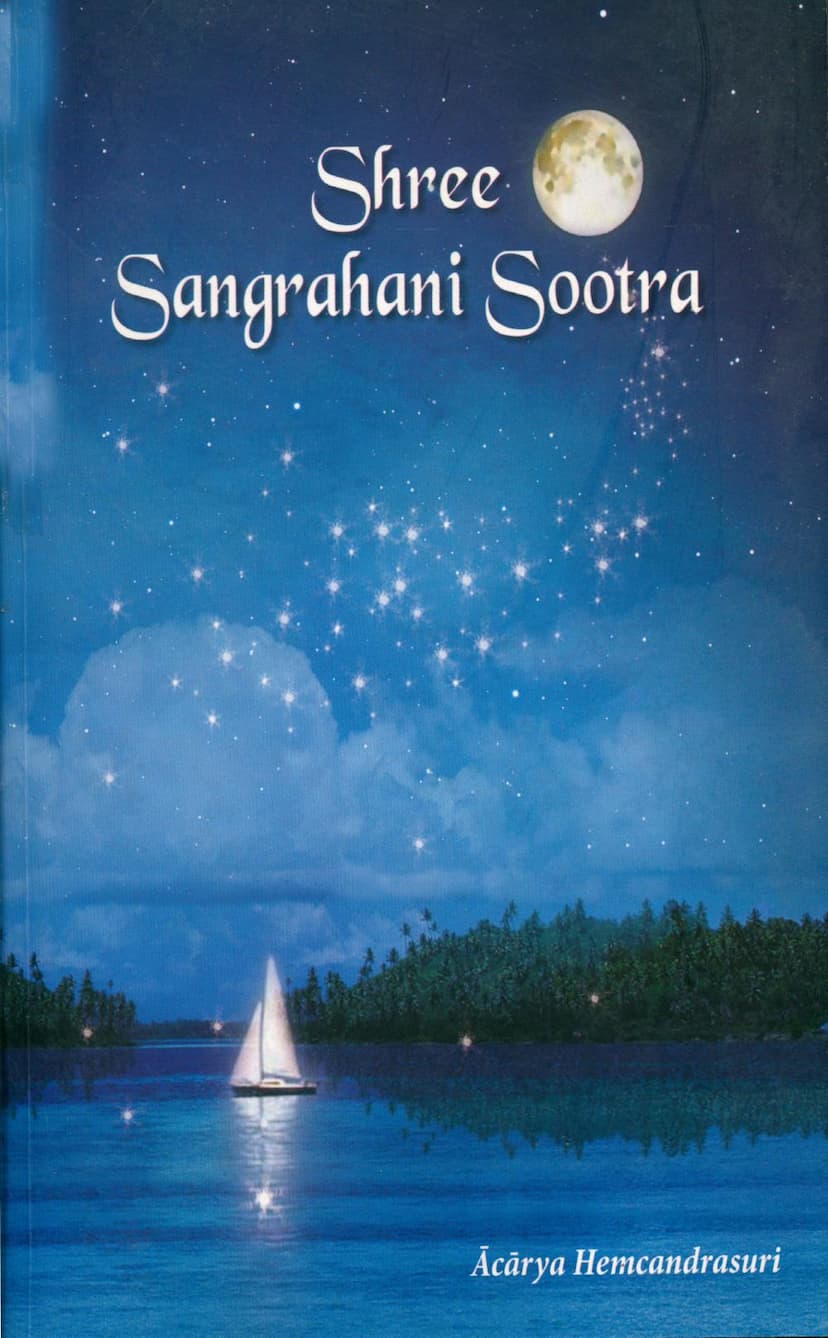Sangrahani Sootra
Added to library: September 2, 2025

Summary
This document is the Shree Sangrahani Sootra, a significant Jain text authored by Acharya Hemchandrasuri and published by the Ambalal Ratanchand Jain Dharmik Trust. The book aims to provide the original verses of the Sangrahani Sootra along with their Gujarati and English translations. The publisher emphasizes the importance of this dual-language presentation for the benefit of the younger generation who have been educated in English medium schools and may not understand Gujarati.
The Sangrahani Sootra is described as a text that provides a glimpse of the entire universe within the Jain tradition. It elaborately describes the lifespans, dwelling places, bodily proportions, births (upapāta), deaths (cyavana), time gaps between births and deaths, the number of souls taking birth and dying simultaneously, and their movements (gati and āgati) for beings across the four life-forms (deva, naraka, manushya, and tiryancha). It also touches upon Jain geography, presenting information that is challenging and ripe for research for modern geographers.
Key Features and Content:
- Structure: The text is structured into four main sections (adhikāras):
- Devādhikāra: Celestial beings.
- Narakaādhikāra: Hell dwellers.
- Manushyādhikāra: Human beings.
- Tiryanchādhikāra: Animals and lower life-forms.
- Detailed Descriptions: The Sutra provides detailed information on various aspects of these beings, including:
- Lifespans (Sthiti/Āyushya): Extensive details are given on the minimum and maximum lifespans of various categories of deities (Bhavanapati, Vyantara, Jyotisha, Vaimānika) and hell dwellers across different levels and regions.
- Dwelling Places (Bhāvanas/Vimānas): The text describes the nature, size, and arrangement of the celestial abodes (vimānas) of deities and the residential places (bhavanas) of Bhavanapati and other celestial beings. It also details the hellish realms and their structures.
- Bodily Aspects: Information on bodily heights (avamāhanā), body structures (sanghayana), body postures (sansthāna), color (varna), smell (gandha), taste (rasa), and touch (sparsha) is provided.
- Cosmology and Geography: The text delves into Jain cosmology, describing Mount Meru, Jambudweepa, various oceans and continents, and the structure of the universe (lokanālika). It also provides details on the dimensions of celestial bodies like the Sun, Moon, planets, and constellations.
- Lifecycle of Souls: It discusses the duration of life-conditions, the process of birth and death (upapāta and cyavana), and the time gaps between them. It also explains the various ways souls transition between different life-forms (gati and āgati).
- Jain Practices and Concepts: Elements like Leshyās (emotions), Paryāptis (developmental stages), Prānas (life-force elements), and the nature of Āyushya karma (karma related to lifespan) are discussed.
- Saints and Their Asceticism: The text mentions the types of ascetics and the heavens they might attain based on their practices.
- Symbols and Attributes: It lists the symbols associated with different classes of celestial beings and the characteristics of their bodies and abodes.
- Measurement Units: The text defines Jain units of measurement like Paramānu, Trasrenu, Angula, Hātha, Dhanushya, Kosha, and Yojana, which are crucial for understanding the vast scales described.
- Number of Souls and Structures: It provides numerical data on the number of vimānās, narakāvāsās, pratarās, and the number of souls that can attain salvation at the same moment from different realms.
- Jain Philosophy: Underlying the descriptions is the Jain understanding of karma, rebirth, liberation (moksha), and the nature of the soul.
Purpose and Audience:
The primary goal of this publication is to make this complex and detailed Jain scripture accessible to a wider audience, particularly the younger generation educated in English. By offering both original verses and translations, it aims to facilitate a deeper understanding and study of Jain principles related to the cosmos, biology, and the soul's journey. The text is intended for students, scholars, and anyone interested in delving into the intricate details of Jain cosmology and biology.